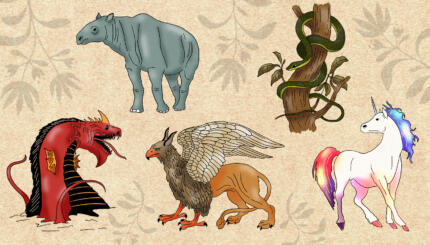The book of Ruth presents the sages of the Midrash and Talmud with a unique social and religious problem. In the figure of Ruth, they are faced with a Moabite woman, a descendant of a people that the Pentateuch emphatically proscribes from entering the congregation of the Lord (Deuteronomy 23.1). In the biblical verses, she is depicted from the start as an exemplary woman–a heroine by the merit of her own actions–before she enters the Israelite fold.
The problem of when the story was actually put into written form remains unresolved and bears on our concerns here, but what matters more for this discussion is the fact that the Talmudic sages generally accept the traditional claim that it was written by Samuel (Talmud, Baba Batra14a). Yet they place Ruth not after Judges in the biblical canon, but among the Writings, indicating that they too are unsure of its date. [The classical definition of Ruth is that it is part of the Wisdom literature dating between the fourth and third century BCE.]
Faced with the cognitively dissonant exemplary character of this foreign woman, who will also become the ancestress of the Davidic line, the rabbis of the Talmud feel that they have to halachically [legally] legitimize Ruth’s conversion. Then, having accomplished her acceptance into the fold, they wish to underscore her merit and extraordinary kindness and valor, which make her a suitable figure to stand at the beginning of the Davidic (messianic) line.
They study the book closely and take any good characteristic of Ruth, enlarging and embellishing it to portray her as a very special woman, a paragon of piety and virtue. Ruth is the only convert to have a biblical book named after her–a profound and unparalleled honor. Moreover she is, with Esther, one of only two women to have this distinction. [Judith, another book named after a woman, did not make it into the Jewish canon.]
With your help, My Jewish Learning can provide endless opportunities for learning, connection and discovery.
I shall examine several themes in the Midrash related to the life and character of Ruth, which will reveal a Ruth possessing the feminine virtues the rabbis want to hold up for emulation. In her introduction to the section on Ruth in the Interpreter’s Bible, Louise Pettibone Smith remarks that, “Ruth acts always for love and trust of Naomi…doing all that she bade her.” [L.P. Smith, The Interpreter’s Bible, II (New York: Abingdon Press, 1954).] I would expand that to say that Ruth, in both the original biblical narrative and in the midrashic retellings, is seen to act out of love for Naomi, but also out of a more general love and generosity, embodying the quality known in Hebrew as hesed,a term generally rendered in English as ‘loving kindness’ and discussed further below.
The Theme of Hesed
The theme of kindness is central to the book of Ruth. Rabbi Ze’ira stresses this characteristic of the narrative. “This scroll [of Ruth] tells nothing either of cleanliness or of uncleanliness, neither of prohibition or permission. For what purpose then was it written? To teach how great is the reward of those who do deeds of kindness” (Midrash Ruth Rabbah 2.13).
Hesedis indeed one of the key words controlling the text. The word occurs three times: at the beginning, in the middle, and at the end of the story (Ruth 1.8, 2.20, 3.10). The scroll commences with the hesedRuth does for Naomi–from gleaning in the fields to bringing food–and the hesedshe does in honoring the memory of the dead in Naomi’s family (which becomes, by marriage, her own). “And Naomi said to her daughter-in-law, ‘blessed be he of the Lord, who has not left off his kindness [hesed]from the living and from the dead'” (Ruth 2.20). Boaz says to Ruth, “Your last act of hesedis better than your first that you did not go after the young men whether rich or poor.” He promises to look after her needs [Ruth 3:10].
Every character acting in this brief story–from Naomi to Ruth to Boaz to the minor characters–behaves in a manner that demonstrates this heroic concept of some form of hesed.The main actors of the story all act in the spirit of hesed; some perform ordinary hesed, and some–especially Ruth–extraordinary hesed.Their exemplary behavior is somewhat reminiscent of that of the patriarchs and matriarchs.
The Ruth narrative resembles the older narratives in language, content, and style (Ruth 3.3-9; cf. Genesis 24.12-14). Ruth, like Abraham–the founder of the nation, the first of the proselytes–leaves the house of her father and mother and goes to join a people who, as far as she knows, will not accept her because of her foreign origins (Midrash GenesisRabbah 59.9; Talmud, Sukkah 49b). Yet she will not be dissuaded and joins the Israelite nation, with no thought of reward for this act of affiliation, and in this lies her great hesed.The rabbinic sources emphasize the superabundancy of hesed,its “more- than-enoughness.” As Maimonides puts it, the concept of hesed:
“Includes two notions, one of them consisting in the exercise of beneficence toward one who deserves it, but in a greater measure than he deserves it. In most cases, the prophetic books use the word hesed in the sense of practicing beneficence toward one who has no right at all to claim this from you” [Guide for the Perplexed].
Ruth’s mode is the second, to practice benevolence toward people who have no claim on her for it.
Excerpted from “A Thematic Approach to Ruth in Rabbinic Literature,” which appears in A Feminist Companion to Ruth, edited by Athalya Brenner and published by Sheffield Academic Press. Reprinted with permission of The Continuum International Publishing Group.
Midrash
Pronounced: MIDD-rash, Origin: Hebrew, the process of interpretation by which the rabbis filled in “gaps” found in the Torah.
Talmud
Pronounced: TALL-mud, Origin: Hebrew, the set of teachings and commentaries on the Torah that form the basis for Jewish law. Comprised of the Mishnah and the Gemara, it contains the opinions of thousands of rabbis from different periods in Jewish history.


